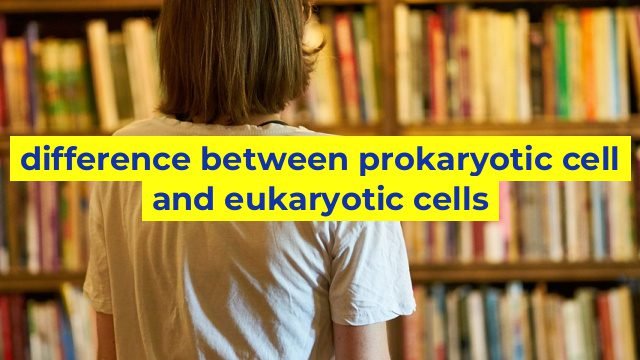The Fundamental Differences Between Prokaryotic Cells and Eukaryotic Cells
Cells are the building blocks of life, and they can be categorized into two types: prokaryotic cells and eukaryotic cells. Both have differences in their structures, organization, and functions. In this article, we will explore the fundamental differences between the two kinds of cells.
1. Structure
The primary difference between prokaryotic cells and eukaryotic cells can be found in their structure. Prokaryotic cells are small and simple in structure, with no nucleus, no membrane-bound organelles, and a single circular DNA molecule. In contrast, eukaryotic cells are larger and more complex, with a nucleus, membrane-bound organelles, and multiple linear DNA molecules.
2. Organization of Genetic Material
The genetic material, or DNA, of prokaryotic cells is found in the cytoplasm, while in eukaryotic cells, it is organized in the nucleus. Prokaryotic cells, therefore, do not have a true nucleus, while eukaryotic cells do.
3. Cell Division
Another significant difference between the two types of cells is the way they undergo cell division. Prokaryotic cells undergo a process called binary fission, which is a simple division of the cell into two identical organisms. Eukaryotic cells go through a more complex process of mitosis, in which the cell divides into two identical daughter cells.
4. Size
Prokaryotic cells are much smaller than eukaryotic cells. The size of a typical prokaryotic cell ranges from 0.2 – 2.0 micrometers, while eukaryotic cells range from 10 – 100 micrometers in size.
5. Organelles
Eukaryotic cells have membrane-bound organelles, such as mitochondria, chloroplasts, and the endoplasmic reticulum, that perform specific functions within the cell. Prokaryotic cells, on the other hand, lack membrane-bound organelles.
6. Complexity
Eukaryotic cells are generally more complex than prokaryotic cells. This increased complexity allows eukaryotic cells to carry out more advanced functions such as multicellularity, which is not possible in prokaryotic cells.
In conclusion, both prokaryotic and eukaryotic cells are essential for life, but they differ significantly in their structure, function, and organization. The fundamental differences mentioned in this article will help to better understand how these two types of cells function and how they have different roles in biological systems.
Table difference between prokaryotic cell and eukaryotic cells
| Prokaryotic Cells | Eukaryotic Cells | |
|---|---|---|
| Nucleus | Absent – genetic material is not enclosed in a nucleus | Present – genetic material is enclosed in a nucleus |
| Cell size and complexity | Small and less complex | Larger and more complex |
| Cell wall | Present in most cells | Present in some cells (plants, fungi, bacteria), absent in animal cells |
| Membrane-bound organelles | Absent – organelles float freely in the cytoplasm | Present – organelles are enclosed in membranes |
| Reproduction | Asexual only | Asexual and sexual |
| Examples of organisms | Bacteria and archaea | Animals, plants, fungi, and protists |
